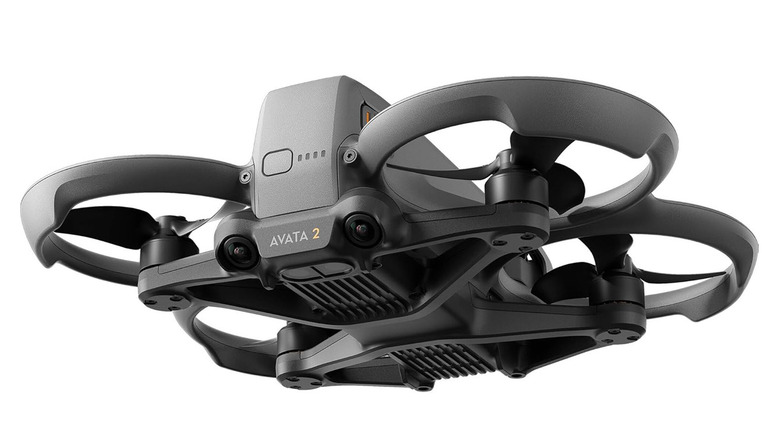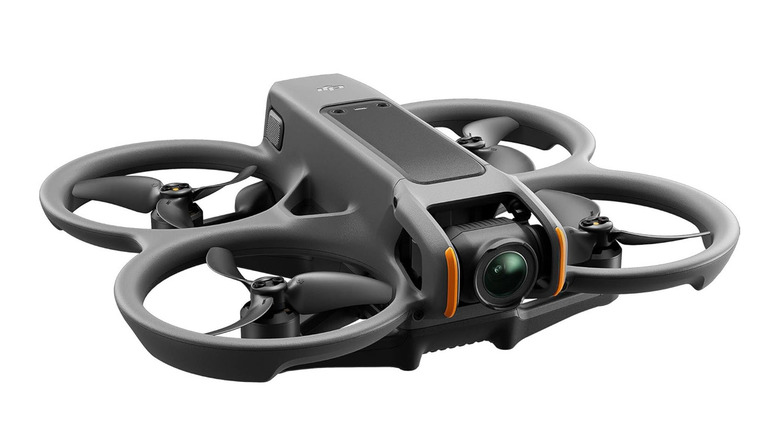Is The DJI Avata 2 A Good Drone For Beginners?
We may receive a commission on purchases made from links.
DJI has been making drones since it developed its first quadcopter in 2011. Since then, the company has grown to become the world's largest manufacturer of consumer drones. The company is continually developing new products, and the DJI Avata 2 is one of its latest offerings. Using lessons learned from previous models of its first-person view (FPV) range, the Avata 2 claims to be an out-of-the-box flying experience suited to beginners and experienced pilots alike.
But while the Avata 2 is easier to use than DJI's older FPV models, calling it beginner-friendly depends on the type of beginner. For those looking to casually film their weekend hikes, it's likely overkill; a simpler model like the SlashGear-approved DJI Neo might be a better option in these instances. But for someone excited by the immersive feel of FPV flying — and willing to put in a little practice — the Avata 2 is one of the most approachable entry points yet.
Importantly, for both beginners and experienced pilots alike, this is a robust drone. Even experienced pilots have flying mishaps, and novices more so. A mix of tough materials and integrated propeller & camera guards means this drone can survive some fairly hefty knocks. This means that flying the Avata 2 is safer for beginners, and less likely to turn your drone into a sob-inducing handful of fried electronics, broken plastic, and regret. Let's take a closer look at the DJI Avata 2 and its suitability for beginners.
The DJI Avata 2's learning curve
Out of the box, the DJI Avata 2 makes it easy for novices to take to the air (except for the annoying activation process). The new RC Motion 3 controller is a big part of that — it has intuitive, motion-based controls that let beginners steer the drone with simple hand movements, rather than complex joystick inputs. A single button handles takeoff, and built-in features like the emergency brake and Turtle Mode (which flips the drone upright after a crash) help build confidence early on. There is also an easy ACRO mode, which allows the pilot to perform some pretty impressive stunts, including rolls and flips. The Avata also features both advanced and beginner-friendly manual flight modes.
On the photography front, the DJI Avata 2 delivers stunning image quality, thanks to a larger sensor than its predecessor. However, while beginners can still get great results, unlocking its full potential may require some trial and error — and some flying practice. The Avata 2 is very much a hands-on drone when it comes to flying. It lacks some of the collision sensors present in other DJI models like the DJI Mini Pro 3, although it does have bottom and rear obstacle avoidance sensors. However, this means capturing the perfect video will be more dependent on your skills than on other models. In the end, there will always be a learning curve with drone flying, and while the Avata 2 doesn't negate this entirely, it does significantly ease it.
Technical aspects of the DJI Avata 2
We'll quickly go over some of the Avata 2's specs here. For a complete breakdown and to find out how the drone performs, check out our comprehensive DJI Avata 2 review. First of all, let's cover the all-important flight time: In optimum conditions and with a full battery, the drone has a maximum flight time of 23 minutes and can hover for approximately 21 minutes. However, both of these assume that you're flying in windless conditions, have a fully charged battery, and are draining it to zero. So, these numbers will be lower in real-world situations as wind, camera usage, and maneuvering all drain the battery more quickly. It's also not a good idea to fly any drone until the battery is drained, anyway.
In terms of performance, the Avata 2 is built for agility and immersion. Its maximum speed of around 60 mph (in Manual mode) and powerful digital stabilization (DJI's Rocksteady) make it ideal for dynamic, cinematic shots. However, it's important to note that this is an FPV drone — and that means you have to fly it using the included DJI Goggles, or at least with them powered on. On the plus side, the updated DJI Goggles N3 have some cool features that can help elevate the drone experience for pilots of all skill levels.
In short, if you just want to capture some holiday footage, there are more approachable options. However, for beginners who want to get into the nitty-gritty of drone flying and aerial photography, the DJI Avata 2 lets them get flying quickly while offering room to grow.


